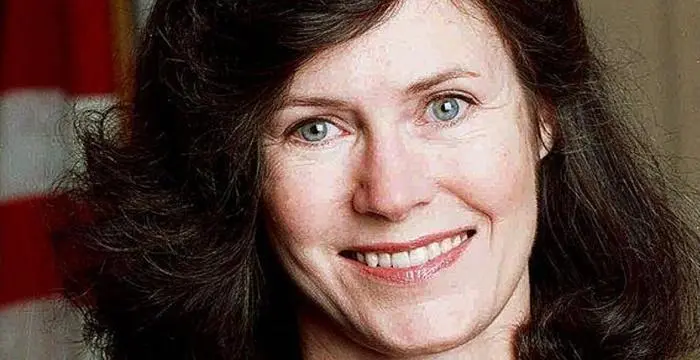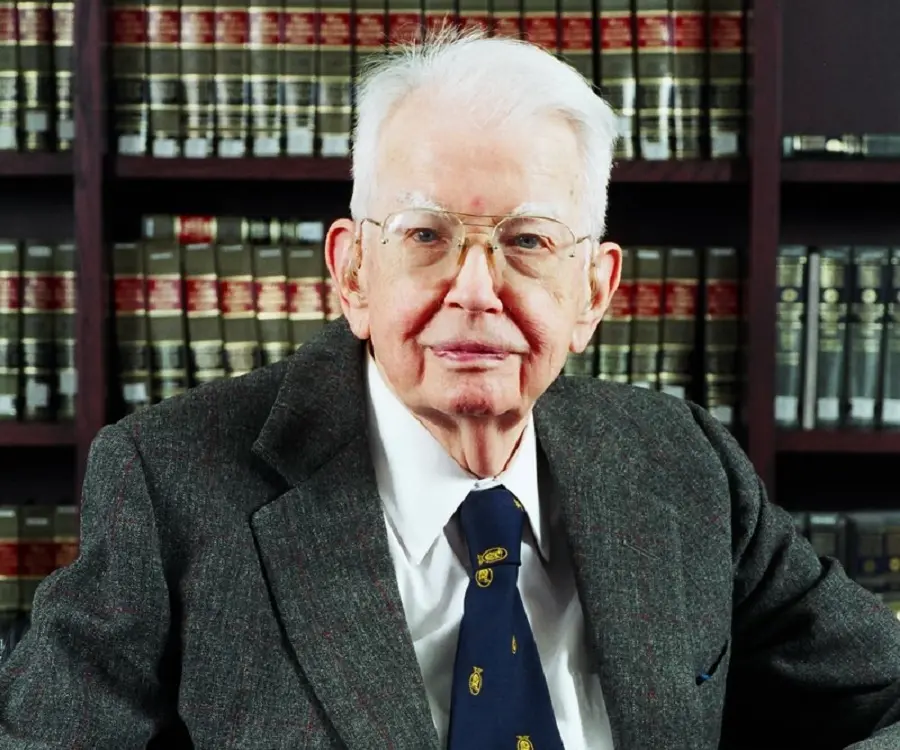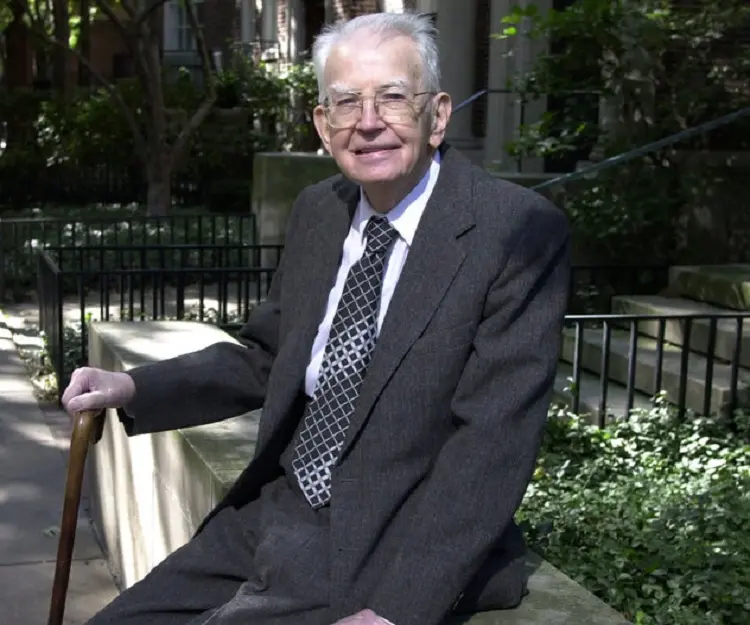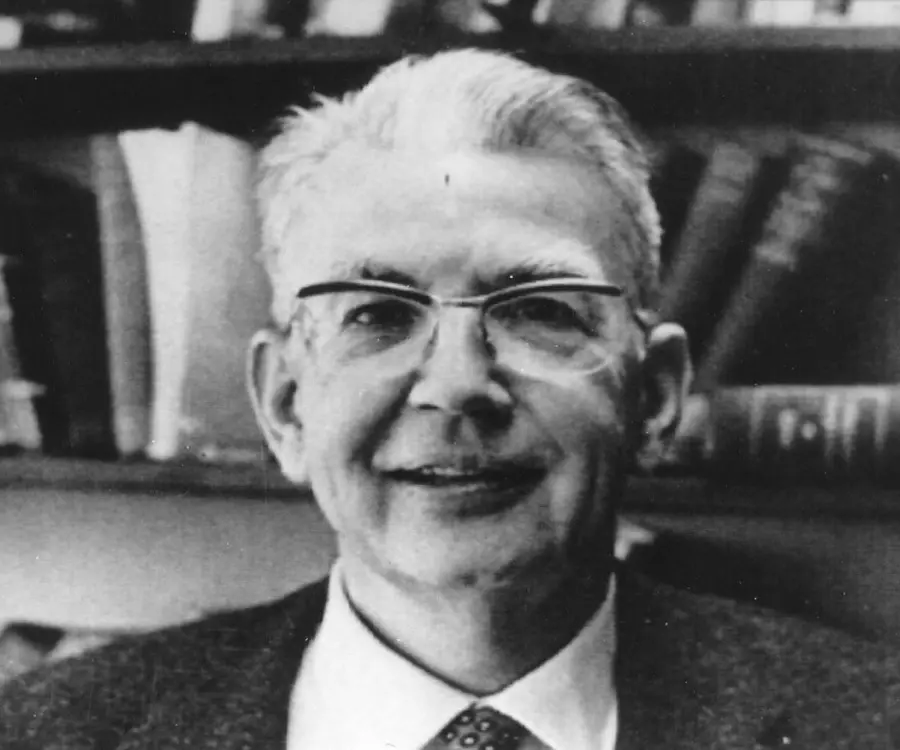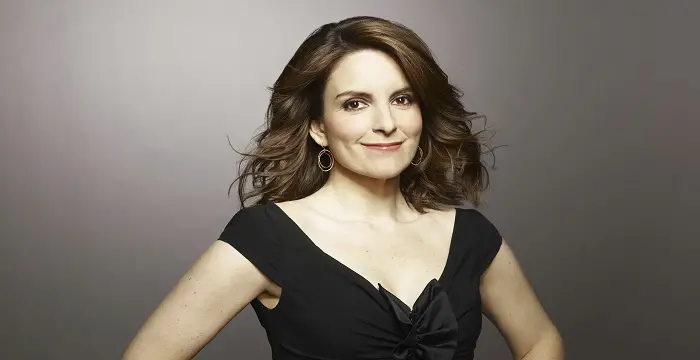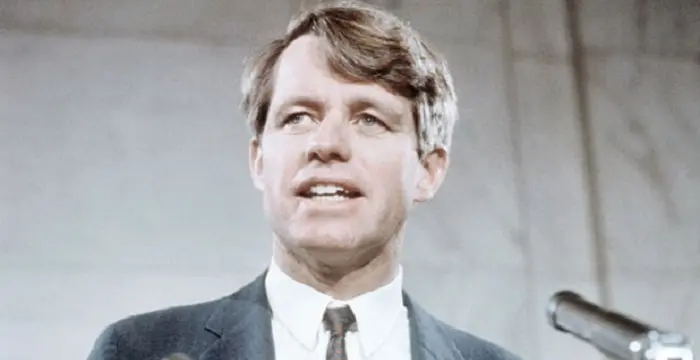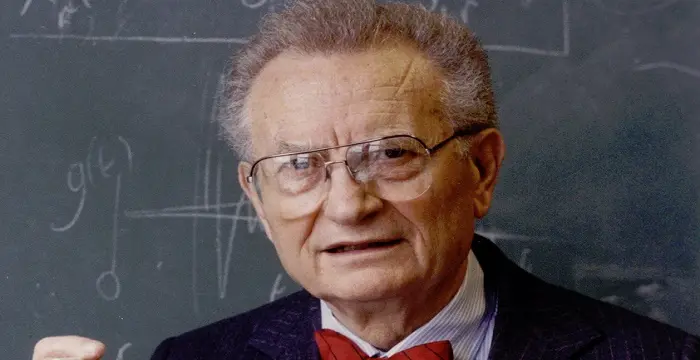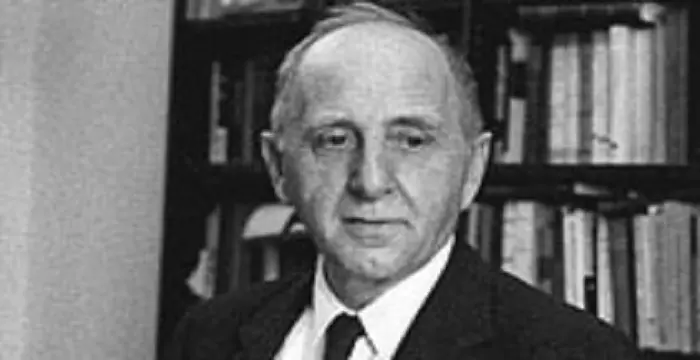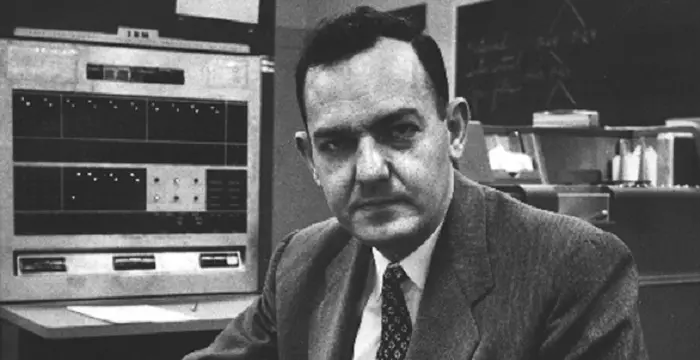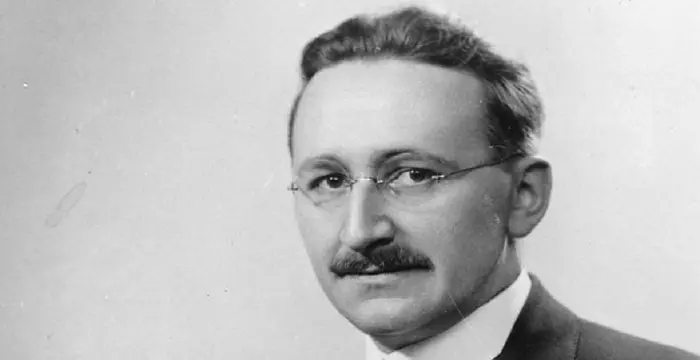
Ronald Coase - Economists, Life Achievements and Family
Ronald Coase's Personal Details
Ronald Coase was a highly acclaimed British economist who became the proud recipient of Nobel Prize in Economics in 1991
| Information | Detail |
|---|---|
| Birthday | December 29, 1910 |
| Died on | September 2, 2013 |
| Nationality | British |
| Famous | London School Of Economics (LSE), University Of Virginia, Intellectuals & Academics, Economists |
| Universities |
|
| Notable Alumnis |
|
| Birth Place | Willesden, London, United Kingdom |
| Gender | Male |
| Father | Henry Joseph Coase |
| Mother | Rosalie Elizabeth Coase |
| Sun Sign | Capricorn |
| Born in | Willesden, London, United Kingdom |
| Famous as | Economist |
// Famous London School Of Economics (LSE)
Kimba Wood
Kimba Maureen Wood is a Senior United States District Judge. Check out this biography to know about her birthday, childhood, family life, achievements and fun facts about her.
David Attenborough
Sir David Attenborough is an English broadcaster and naturalist. This biography offers detailed information about his childhood, life, works, achievements, trivia and timeline.
Lee Kuan Yew
Lee Kuan Yew was the first Prime Minister of the Republic of Singapore. This biography profiles his childhood, life & timeline.
Ronald Coase's photo
Who is Ronald Coase?
Ronald Coase was a British economist and author who won the Nobel Prize in Economics in 1991 for his discovery and clarification of the significance of transaction costs and property rights for the institutional structure and functioning of the economy. A highly learned and distinguished scholar, he was noted for his brilliant acumen and know-how of the minutest details of the subject. For most of his life, Coase held the position of Clifton R. Musser Professor Emeritus of Economics at the University of Chicago Law School. He is often regarded as the ‘father’ of reform in the policy for allocation of the electromagnetic spectrum, based on his article ‘The Federal Communications Commission’ (1959), wherein he criticised spectrum licensing, suggesting property rights as a more efficient method of allocating spectrum to users. Coase rose to fame for his 1937 article ‘The Nature of the Firm’, which introduced to the readers the concept of transaction costs to explain the nature and limits of firms. His 1960 article, ‘The Problem of Social Cost’ suggested that well-defined property rights could overcome the problems of externalities.
// Famous University Of Virginia
Laura Ingraham
Laura Ingraham is a popular radio host, author and political commentator, best known for her radio show ‘The Laura Ingraham Show’. This biography profiles her childhood, life, career, achievements and timeline.
Tina Fey
Tina Fey is an American actress, comedian, writer and producer, most famous for her work on Saturday Night Live and 30 Rock. This biography of Tina Fey provides detailed information about her childhood, life, achievements, works & timeline.
Robert F. Kennedy
Robert F. Kennedy was a U.S Senator and the younger brother of the US President John F. Kennedy. Explore this biography to know more about his profile, childhood, life and timeline.
Childhood & Early Life
Ronald Harry Coase was born on December 29, 1910 in Willesden, a suburb of London, to Henry Joseph Coase and Rosalie Elizabeth Coase. His father was a telegraphist for the post office. Before marriage, his mother too worked at the same post.
Interestingly unlike his parents who were interested in sports—his father playing football, cricket, tennis and lawn bowls and his mother tennis—young Coase was more attracted towards academics. He loved reading.
Coase suffered from weak legs in his childhood which caused him to wear leg-irons. This physical defectiveness led Coase to attend a school specially designed for children with physical defects.
At the age of 12, Coase attained a scholarship that helped him enrol at the Kilburn Grammar School. In 1927, he passed the matriculation exam with a distinction in history and chemistry.
Though Coase wanted to pursue his higher education in either history or chemistry, the inability to do so, due to lack of knowledge in Latin and mathematics required for studying the respective subjects, led him to take up commerce.
After completing his first year of B.Comm, Coase moved to the University of London. He received a Sir Ernest Cassel Travelling Scholarship in United States which allowed him to study why the structure of American industries was organized in different ways. Through this study, he came up with a new concept of economic analysis, transaction costs and an explanation of why do firms exist.
Coase attended the London School of Economic from where he received his Bachelor of Commerce degree in 1932.
Career
Immediately after attaining his graduation degree from the London School of Economics, Coase took up the post of an assistant lecturer at the Dundee School of Economics and Commerce at the University of Dundee. He served in this position for two years, from 1932 to 1934.
In 1934, Coase became an assistant lecturer in commerce at the University of Liverpool. After a year of serving at the post, he moved to his alma mater, London School of Economics, where he remained as a member of the faculty until 1951. He dealt with the course on economic of public utilities in Britain.
In 1937, while working at LSE, Coase came up with his first breakthrough article, ‘The Nature of Firm’ which was primarily based on the result of his undergraduate research in United States. Through the article, he explained the fact that why do firms exist. He claimed that firms were like centrally planned economies except for the fact that they were formed because of people’s voluntary choice. Marketing cost was the primary reason for formation of firmsDuring Second World War, Coase entered government service and worked at the Forestry Commission, Central Statistical Office and Offices of War Cabinet. Post war, in 1946, Coase returned to the London School of Economics wherein he was responsible for the main economic course, ‘The Principles of Economics’. Simultaneously, he continued his research on public utilities, particularly the post office and broadcasting. In 1950, he came up with a book, ‘British Broadcasting: A Study in Monopoly’ which was the result of his studying of the American broadcasting industry while on a Rockfeller Fellowship in 1948. In 1951, Coase migrated to United States. He worked at the University of Buffalo, New York from 1951 to 1958. Subsequently, for a year, he studied at the Center for Advanced Study in Behavioural Sciences In 1959, he moved to the University of Virginia, Charlottesville where he joined the economics department. Two years later, he came up with his second most influential article, ‘The Problem of Social Cost’. Through it, he highlighted the ways in which transaction cost and property rights affected business and society. The article became an instant hit and became the most widely cited article in modern economic literature. The article, ‘The Problem of Social Cost’ led to the eventual development of the Coase theorem, which rested on the foundation that when information and transaction costs are low, the market will produce an efficient solution to the problem of nuisances without regard to where the law places the liability for the nuisance. In 1964, he settled at the University of Chicago where he served as the Clifton R. Musser Professor Emeritus of Economics until 1981. Additionally, he became the editor of the Journal of Law and Economics. He continued to serve this post until 1982. During his tenure as an editor, he temporarily capped the role of a trustee of the Philadelphia Society. In 2012, at the age of more than 100, he came out with a book, ‘How China Became Capitalist’.
Major Works
Coase most distinguished contribution in the field of economics came with his articles published in 1937, 1959 and 1960. In his first article, ‘The Nature of Firm’, he introduced the concept of transaction cost to explain the nature and limits of firms. Through his 1959 work, ‘The Federal Communication Commission’, he suggested property rights as the most efficient method of allocating spectrum to users. Through his 1960 work, ‘The Problem of Social Cost’ he suggested that well-defined property rights could overcome the problems of externalities
Awards & Achievements
Ronald Coase won the 1991 Nobel Prize in Economics for his discovery and clarification of the significance of transaction costs and property rights for the institutional structure and functioning of the economy.
In 2012, he was honoured with an honorary doctorate degree from the University of Buffalo.
Personal Life & Legacy
Ronald Coase tied the nuptial knot with Marion Ruth Hartung of Chicago, Illinois on August 7, 1937 in Willesden, England.
He breathed his last on September 2, 2013, in Chicago, at the age of 102.
// Famous Intellectuals & Academics
Bertil Gotthard Ohlin
Bertil Gotthard Ohlin was a famous Swedish economist. This biography profiles his childhood, family life & achievements.
Emily Greene Balch
Emily Greene Balch was an American economist, sociologist and pacifist who won the 1946 Nobel Peace Prize. This biography of Emily Greene Balch provides detailed information about her childhood, life, achievements, works & timeline.
Martin Buber
One of the greatest philosophers to have ever walked on earth, Martin Buber contributions to philosophy is a long-standing one. Explore all about his profile, childhood, life and timeline here.
Ronald Coase's awards
| Year | Name | Award |
|---|---|---|
Other | ||
| 0 | Nobel Memorial Prize in Economic Sciences | |
Ronald Coase biography timelines
- // 29th Dec 1910Ronald Harry Coase was born on December 29, 1910 in Willesden, a suburb of London, to Henry Joseph Coase and Rosalie Elizabeth Coase. His father was a telegraphist for the post office. Before marriage, his mother too worked at the same post.
- // 1927At the age of 12, Coase attained a scholarship that helped him enrol at the Kilburn Grammar School. In 1927, he passed the matriculation exam with a distinction in history and chemistry.
- // 1932Coase attended the London School of Economic from where he received his Bachelor of Commerce degree in 1932.
- // 1932 To 1934Immediately after attaining his graduation degree from the London School of Economics, Coase took up the post of an assistant lecturer at the Dundee School of Economics and Commerce at the University of Dundee. He served in this position for two years, from 1932 to 1934.
- // 1934 To 1951In 1934, Coase became an assistant lecturer in commerce at the University of Liverpool. After a year of serving at the post, he moved to his alma mater, London School of Economics, where he remained as a member of the faculty until 1951. He dealt with the course on economic of public utilities in Britain.
- // 7th Aug 1937Ronald Coase tied the nuptial knot with Marion Ruth Hartung of Chicago, Illinois on August 7, 1937 in Willesden, England.
- // 1991Ronald Coase won the 1991 Nobel Prize in Economics for his discovery and clarification of the significance of transaction costs and property rights for the institutional structure and functioning of the economy.
- // 2012In 2012, he was honoured with an honorary doctorate degree from the University of Buffalo.
- // 2nd Sep 2013He breathed his last on September 2, 2013, in Chicago, at the age of 102.
// Famous Economists
Bertil Gotthard Ohlin
Bertil Gotthard Ohlin was a famous Swedish economist. This biography profiles his childhood, family life & achievements.
Emily Greene Balch
Emily Greene Balch was an American economist, sociologist and pacifist who won the 1946 Nobel Peace Prize. This biography of Emily Greene Balch provides detailed information about her childhood, life, achievements, works & timeline.
Paul Samuelson
Nobel laureate Paul Anthony Samuelson is referred to as the ‘Father of Modern Economics’. This biography profiles his childhood, life, career, achievements and interesting facts about him.
Simon Kuznets
Simon Kuznets was a noted Russian-American economist, statistician, demographer, and economic historian. Check out this biography to know about his childhood, family life, achievements and other facts related to his life.
Herbert Simon
Herbert Simon was an American political scientist, economist, sociologist, psychologist, and computer scientist. Check out this biography to know about his childhood, family life, achievements and other facts related to his life.
Friedrich von Hayek
Friedrich von Hayek was a Nobel Prize winning Austrian-British economist and philosopher, best known for his defense of classical liberalism. Check out this biography to know about his childhood, family life and achievements.
Ronald Coase's FAQ
What is Ronald Coase birthday?
Ronald Coase was born at 1910-12-29
When was Ronald Coase died?
Ronald Coase was died at 2013-09-02
Where is Ronald Coase's birth place?
Ronald Coase was born in Willesden, London, United Kingdom
What is Ronald Coase nationalities?
Ronald Coase's nationalities is British
What was Ronald Coase universities?
Ronald Coase studied at London School Of Economics,University Of Virginia
What was Ronald Coase notable alumnis?
Ronald Coase's notable alumnis is London School Of Economics, University Of Virginia
Who is Ronald Coase's father?
Ronald Coase's father is Henry Joseph Coase
Who is Ronald Coase's mother?
Ronald Coase's mother is Rosalie Elizabeth Coase
What is Ronald Coase's sun sign?
Ronald Coase is Capricorn
How famous is Ronald Coase?
Ronald Coase is famouse as Economist
